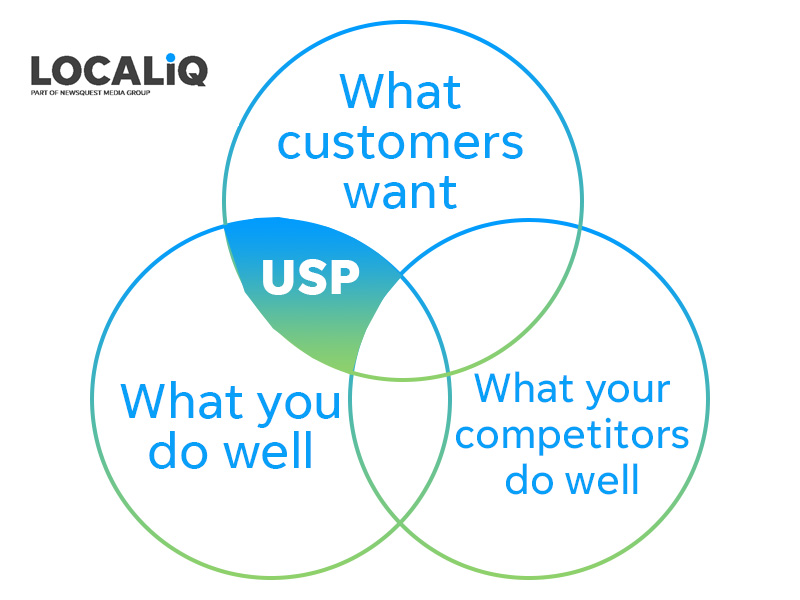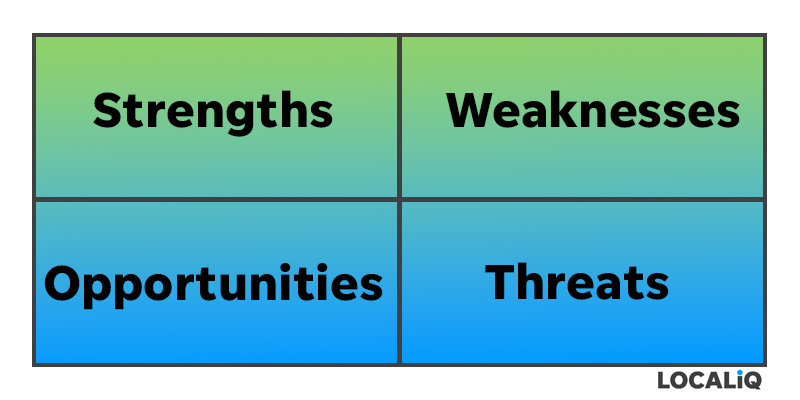Your Unique Selling Proposition or USP is what makes you better than your competition (and makes you more appealing to potential and existing customers). But how do you work out your USP and use it to your advantage? This blog will cover everything you need to know about writing a great USP and how to market your business using it.
What is a Unique Selling Proposition (USP)?
Your Unique Selling Proposition sometimes also called a Unique Selling Point, is the one thing that helps you to stand out from the competition; it is your identity. Your USP is what your customers (existing or potential) want and what you do best. Customers will remember this about you and could become repeat business. A USP is not always a single element, it can be a unique combination of several elements.

It is advisable to review your USP regularly, and, if needed update it. In the business world, things can change rapidly, including your competitors, and PESTLE (political, economic, social, technological, legal, and environmental) factors all of which can have an impact on a business.
How can I create a USP for my business?
Determining your brand involves several key steps:
Define the brand
Who knows your brand better than you? From a marketing perspective, it is imperative to perform a SWOT analysis, to evaluate your position in the market.

Your strengths and weaknesses are internal to your business. This can form the basis of where you have an advantage over the competition. Opportunities and threats are external forces that you cannot control such as competitors, transport links, buying power, PESTLE factors and so on.
Target audience
It’s not enough to say your target audience is everyone. You cannot please everyone with your product/service offering. To achieve your target audience, you need to create buyer personas. By creating buyer personas, you are getting to know your customers which is vital for building relationships and for curating a USP that satisfies their needs.
Your target audience is one of the most crucial factors to figure out when defining your USP using demographic and psychographic factors.
Demographic factors:
- Age
- Location
- Profession and income
- Marital Status
- Ethnicity
Psychographic factors:
- What are their values (for example, are they environmentally conscious?)
- What are their hobbies/interests?
- Personality
- Lifestyle
- Social attitudes
As yourself “Is this product/service something that the target audience wants and will purchase?”
How to develop a competitive advantage
You completed a SWOT analysis on your business, now it is time to do the same on your competitors. This will enable you to see if there are any areas in which you outperform them, as well as looking for areas you can replicate or improve upon. While conducting regular competitor research, it may become necessary to change and re-evaluate your USP. Look to your competitors and see what they are doing well. How are they effectively meeting the needs of their customers? If you are doing something better, then that potentially is your USP.
The next aspect of competitive advantage is to look at what makes you distinctive. You need to establish what your business is good at. A brainstorming session with yourself or a few of the team is an excellent way to begin defining your distinctiveness.
Defining your competitive advantage falls into one of these categories:
- Cost leadership strategy – This strategy focuses on being the lowest priced in the market. This is often seen in larger businesses that have elevated levels of production and the largest bargaining and buying power.
- Differentiation strategy – In this segment, businesses focus on one or a small number of market segments. These are niche markets and businesses that can establish themselves as providers of niche goods or services. You do need to do your research and ensure there is a market for your goods or services first! This strategy is often utilised by small businesses and handmade markets, charging more for a one-off or a limited number of unique items.
- Differentiation leadership – This segment focuses on businesses that target larger markets and who aim to achieve a competitive advantage across an entire industry. A higher marketing budget is usually needed for these strategies. Typically, large businesses can charge a premium price for their product as their brand is established and trusted. Take Nike for example; their products are available direct from Nike as well as other retailers and come with a premium price tag. They are also a trusted brand, and its customers have brand loyalty so will continue to use its range of sportswear. Here are several ways that differentiation leadership can be achieved:
-
-
- Superior quality product
- Branding
- Industry-wide distribution
- Consistent promotion
-
Examples of brands with a great USP
You have performed an analysis on your business, your target personas and your competitors and have produced a USP, now you need to communicate it. The best way you can do this is to have a strong value proposition. This needs to be a short, jargon-free tagline that tells your customers about your brand. Here are three examples of great taglines and USPs.
- Canva – Empowering the world to design – Once upon a time, design was a specialised market, nowadays, Canva helps you to create graphics for every occasion. Their USP ‘empowering the world to design’ is perfect as it covers exactly what it does.
- Duolingo – The free, fun, and effective way to learn a language – A fun bit of alliteration in their USP. The fun element stays with the user through simple learning and a cute little owl.
- Ben & Jerry’s – We make the best possible ice cream in the best possible way. This slogan uses repetition of the words ‘best possible’ to draw you in…and makes you want the best possible ice cream!
Each of these slogans represents the value to the customer, you can design, learn a new language for free and eat the best possible ice cream. All the USPs use hyperbole and your USP should too; include words like greatest, best, first, to describe your offering.
You may have a few ideas of what you want your USP to be but are not sure which one is best. This is where A/B testing comes in. For example, you could have locally sourced materials for your bespoke prom dress or ethically sourced materials for your bespoke prom dress. You can A/B test on social media using paid ads or even just asking current customers for their input. You can also create 2 landing pages and measure how each one performs
Once you have finalised your USP, it can be used across all your marketing channels:
- Your website – Have a clear USP on the main page of the website where you can show how your USP can help visitors.
- Social media channels – you can include this in your channel bios as well as on your social posts.
- Email – You can include this in the header or footer or even your email signature.
Creating your Unique Selling Proposition is a process that should not be rushed. Take your time to do your research internal to your organisation as well as external forces.
Talk to us today to see how we can help you achieve your business marketing goals. You can also sign up to our monthly newsletter that is full of useful and insightful digital marketing news.






